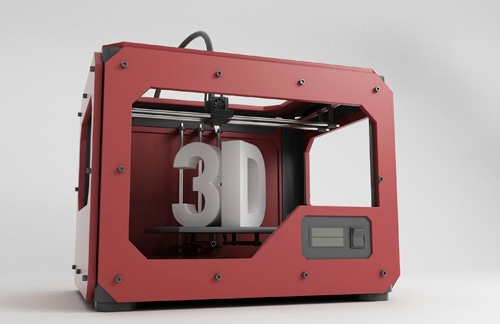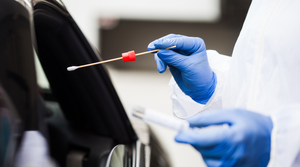Considerations for Sterilization and Biocompatibility of 3-D Printed Orthopedic Devices
Additive manufacturing is opening up a whole new world for orthopedic devices, but 3-D printed orthopedic devices present challenges when it comes to sterilization and biocompatibility.
October 10, 2016

Additive manufacturing is opening up a whole new world for orthopedic devices, but 3-D printed orthopedic devices present challenges when it comes to sterilization and biocompatibility.
Matthew R. Jorgensen, PhD, and Thor Rollins, BS
Orthopedic medical devices can be created using additive manufacturing, or 3-D printing. This newly popular manufacturing process allows these devices to be customizable and more cost effective. Some of the other advantages to using 3-D printing methods during the manufacturing process include the ability to create intricate surface textures and the reduction of material waste. However, these advantages also contribute to the challenges of sterilization and biocompatibility of 3-D printed orthopedic devices.
The use of additive manufacturing processes allows for a device to be created to match an MRI, giving a near perfect fit into a patient's body. This includes the addition of intricate geometries both in and on the device, allowing space for tissue growth and integration. These complex shapes often require more time for sterilant gasses to penetrate the device and provide spaces where gasses can potentially be trapped, requiring a longer aeration time. Device manufacturers using 3-D printing methods and a gaseous sterilization process might need to plan for a slightly longer process than for devices created using more traditional manufacturing methods. Manufacturers that plan to use radiation to sterilize their 3-D printed devices should be aware of the material selection, as well as perform product functionality testing on polymers to ensure there is no unacceptable crosslinking, chain scission, or other effects.
Validation of the sterilization of a 3-D printed medical device will also require extra consideration. "Batch" sterilization may not always be applicable, because in these situations, a batch often consists of a single customized device. This means that more emphasis should be placed on the validation of the process rather than on the completed product. This can be done through family grouping, where one product type that represents the different configurations and processes is chosen as the "master product." The master product is then justified and used for validation.
One of the most beneficial characteristics of a 3-D printed device is its ability to be customizable for each patient. This includes the surface textures on the outside of the device that help promote tissue ingrowth and integration into the body. These textures should be thoroughly evaluated using scanning electron microscopy and energy dispersive x-ray spectroscopy to ensure the correct surface texture is chosen depending on the end use of the device. The ability to create different textures also adds to the possibility of microvoids within the product. Microvoids can decrease the device's hemocompatibility within the body, and can also be a place where chemicals, oils, and leachables can become trapped. Both of these situations can cause harm to a patient. These risks can be evaluated through a series of chemistry and biocompatibility tests to ensure the 3-D printed device is safe for patient use.
When 3-D printed devices are manufactured, there is often sacrificial support material for interior or hanging parts of a device. This support material comes in contact with the device and has the potential to become stuck in holes or openings in the device. It can then be shed as particulates during the normal use of the device, posing a threat to a patient. Sacrificial support material and the risks it may present should be considered when evaluating a 3-D printed device.
Manufacturers that are aware of both the benefits and the risks 3-D printed devices can pose will be able to better utilize the possibilities of this manufacturing technique. Manufacturers can make informed decisions and plan for the necessary considerations and testing requirements of 3-D printed devices if they are aware of the potential benefits and the challenges in biocompatibility and sterilization testing they may come across.
Matthew R. Jorgensen, PhD, is a chemistry and materials scientist at Nelson Laboratories. Reach him at [email protected].
Thor Rollins is a senior scientist at Nelson Laboratories.
This article was adapted from "Sterilization and Biocompatibility of 3-D printed Orthopedic Devices: Testing Considerations."
[image courtesy of MAILFOR/iSTOCKPHOTOS]
You May Also Like


